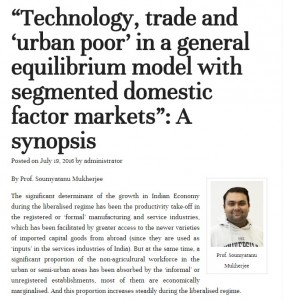ACCESS PATHS TO GOODS AND SERVICES
By Prof. Mahesh P. Bhave
Right next to the bus stand in Kunnamangalam is a shop that fries banana chips, tapioca chips, and more – all fresh. A big round-bottomed fryer sits in front and to the right of the store. Often the frying happens in front of you. Steam pours up from the pot and smoke from the flames beneath it. The giant strainer with bubbling chips is an impressive sight.
The storeowner offers samples, a fine marketing technique. By doing this, he has made me buy more than I planned to on numerous occasions. I’ve tasted foods unique to Kerala I would not have dared experiment with absent this sampling. The freshness of the chips is beyond dispute.
I quibble in making a full endorsement for two reasons,
a) I am unsure how often the shop-owner changes the oil after frying, that is, after how many batches, and
b) The access steps to reach the storefront are most peculiar. To reach the point of purchase, one needs to descend three giant steps, each at least two feet deep.
The steps are difficult for any prospective customer; even a relatively able bodied person like me has to be careful before I take the plunge. It would not surprise me to learn that people have tripped in descending them.
I cannot blame the shopkeeper for using the same oil again and again to the limit of its disintegration; it is likely the most significant component of his overall costs. The steps are another matter. Could the three giant steps be converted into six smaller ones? I think so. Why has the storekeeper not done it? I don’t know.
Proper Access to Stores – A Larger Puzzle
Difficult access to the bounty of the stores, of nearly all Kunnamangalam retailers, alas, is the norm and not the exception. To reach the brightly lit, tiled interiors, one steps through mud, across puddles, through parked motorcycles, and over trash. Then, you wipe your feet on the entry mat, before you may enter the store, sometimes by removing footwear before you do so.
This is un-customer-centric. How difficult would it be for a retailer to make the access path easier to navigate? Even if the access land belongs to the village? Focus on the customer would require the shop owner to undertake the expense of a pathway. Better yet, a group of adjacent shop owners could pool their resources to build a firm, shared walkway common to all their stores. Or they may insist to the village administration that a well-built sidewalk along the stores should be a village priority.
Regardless, whatever the retailers may do, their location outside IIM begs the question: Why have students of marketing not acted on this absence of access pathways, and reached out to the store owners and proposed such solutions? This is a social service project worth doing.
© Mahesh P. Bhave
Mahesh P. Bhave is a visiting professor of strategy at IIM Kozhikode

















 Users Today : 36
Users Today : 36 Users Yesterday : 388
Users Yesterday : 388 This Month : 7278
This Month : 7278 This Year : 112406
This Year : 112406 Total Users : 536394
Total Users : 536394 Who's Online : 3
Who's Online : 3